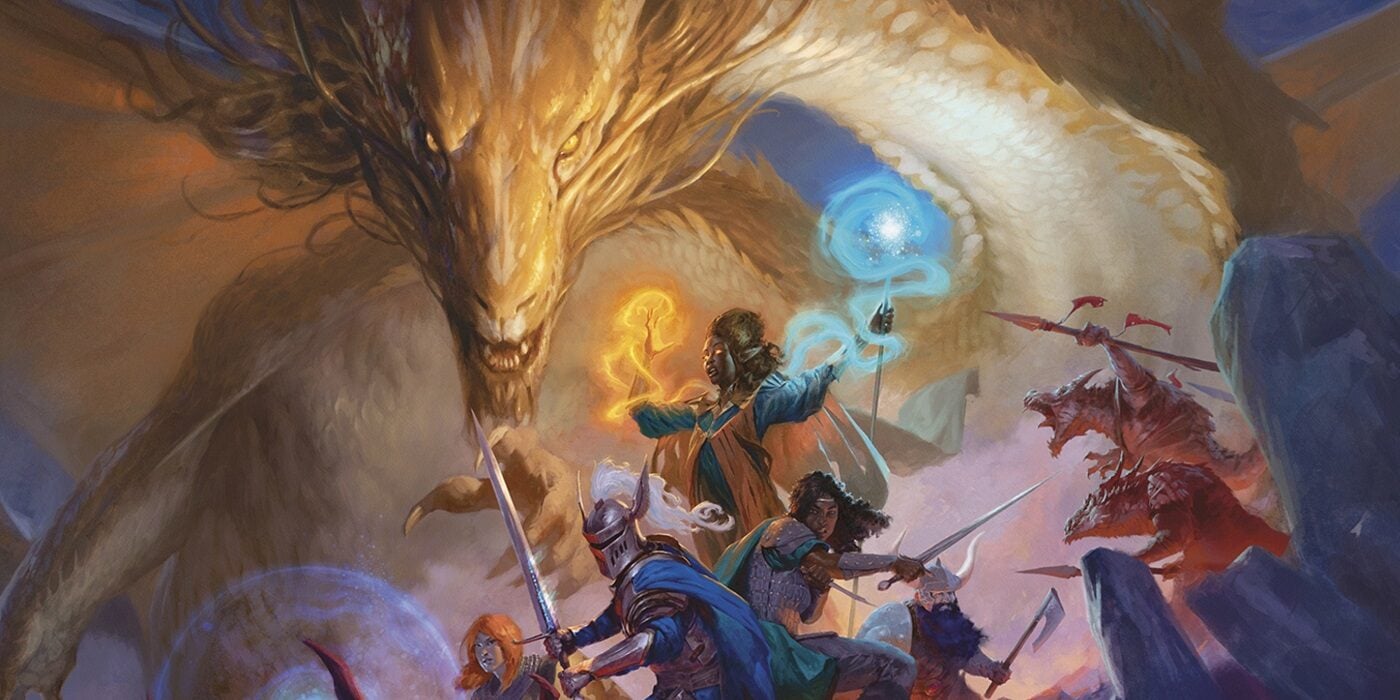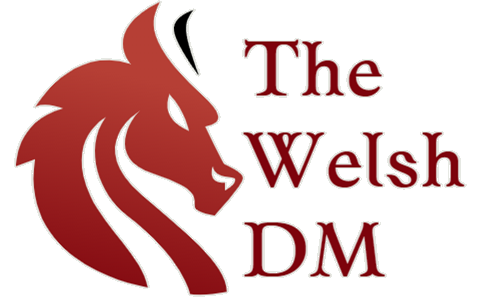The (not totally) new edition of D&D is a mere three months away, and with it comes a big honking reveal video from Crawford, Perkins, and Todd on their Youtube channel. If you haven’t watched it I recommend you do because there will be more than I can cover here, but I want to raise and discuss some of the more interesting comments and trends we seem to be getting in September and beyond.
It meant picking up one of their £40 adventure books would still be perfectly fine and suitable to run. The encounters would remain in the realm of “balanced”, and the mechanics would work fine. And in their defence, this is a valid interpretation.
However, they also argued that you’d be able to run a party of 2014 (5e) characters mixed with 2024 (5.5e) characters and everything would be fine. Except based on the facts this feels like a stretch. Is it technically possible? Absolutely, fundamentally they’re running on the same core system. In reality, it may expose flaws and raise questions.

The adoration of Weapon Mastery (see below) and the designer’s sentiments about it becoming a core sub-system akin to spellcasting will massively expose the 2014 martial classes. In fact, Chris Perkins actually stated how playing the 5e Fighter felt like it was bland and boring (nice to know they’ve finally noticed this).
I think the goal was noble, but the messaging became murky. The truth of the matter is clear now, backwards compatibility applies to your adventure and campaign setting books, but not to player options and mechanics.
Weapon Mastery Fundamental
In all honesty, I have had some issues with Weapon Mastery through the playtest, but having watched the follow-up video with Jeremy Crawford explaining how they see it being used, I am encouraged. The jury will wait till September but the goal sounds good.

In a nutshell, the designers seem to be aiming for Weapon Mastery to become the mirror to Spellcasting within 5.5e; an entire subsystem that attaches to the core game and enables a specific fantasy. In fact, Crawford went on to highlight how Weapon Mastery can and should be used to establish combo moves not only between the party but also with just yourself.
Martial classes with two masteries will be able to utilise both weapons in a turn to chain different types of effects to achieve the best possible outcome. It’s a rich vein for power games and roleplayers alike to unlock a new aspect of a game that had become very stale for martial characters.
Of course, all of this praise is coming from the design team itself, so time will tell if they’re just bought into their own hype. But I have to admit, it does sound good to me, allowing a fighter to manipulate their enemy with their blows, and set up their allies for success.
More Options, More Versatility, More Diverstiy
If I’m totally honest, this is the headline of 5.5e. Across the spectrum of the game, the big push has been towards greater choice for players when it comes to building, playing, and evolving their characters. Original 5e was locked into certain tropes due to species ability scores, backgrounds being underutilised, and major class choices being very early on.
Well, that’s changed. We’ve seen the breadth of species changes through One D&D, focusing more on the unique selling point of each ancestry, a core feature rather than a defining attribute. I am a big fan of this, we all want to see as much diversity in our characters as possible – although levelling up species features will continue to irk me.

Subclasses are now universally at 3rd level, which means new players will have a chance to learn their class & character before committing to a subclass to see them through the rest of the adventure. In some cases this narrative is weird, but that may be a hangover of ingrained 5e normality by now. This is mitigated however by the message that the designers expect experienced players to always start at 3rd level; and there will be guidance on how to build higher-level characters in the PHB.
This idea is interesting because what it implies is the designers see 1st and 2nd level as the introduction area to the game. I’ve long believed the game needs to be better at introducing new players to the game with the early levels. The problem though is that at 1st and 2nd levels the game is affected by the swingyness of the d20 much more. Hit point totals are more prone to critical hits. Attacks are more prone to low rolls. And skill checks can easily be failed halting progress. If the designers intend for the game to be newbie-focused at 1st & 2nd levels, I sincerely hope that the game reflects this – although I see nothing suggesting this.
Lastly in this section, Backgrounds. My have they had an overhaul. I think the 5e concept for backgrounds had noble intent. Trying to truly lean into the roleplay with looser rules that tried to inspire creativity rather than place limiting mechanics upon it. Unfortunately, it fell a little short, with background features becoming repetitive and barely useable, the B-I-F tables falling away by players inventing their characters from scratch, and the equipment being an after thought.

Well in 5.5e Backgrounds have taken on a little bit of a Pathfinder sheen, now being the critical player choice for shaping your character prior to their adventuring-moment. Level 1 ability score bonuses are now part of your background, tied to three abilities, with your choice of how to assign bonuses within that. Throw in the 1st level feat, and backgrounds are now almost a Level 0 class that you use to define your character.
We haven’t seen all of the backgrounds, I hope some element of the tables are still there, and the inspiration for creating character backstories, but overall it feels like the change that was always going to come as we moved away from “specific-racial” phenotypes in our TTRPGs. I will be curious how it plays out in still enabling diverse species-background-class combinations with a small limiter on ability choice in play, but it still feels more varied than in 2014.
Make New GMs, and Existing GMs Better
We got a little bit of a view of the new Dungeon Master’s Guide and the raft of new and reorganised content within. The new lore glossary sounds good for people getting into the game and provides a place for the shared language of the game. The Bastion system that appeared in the playtest remains – although I’m still unconvinced by it.
Where the real value lies is in the new section which details how to build an Adventure, before following up with not 1, not 2, but five fully written adventures that follow the advice in the book. This will be an incredible resource for new GMs who don’t know where to start when it comes to preparing a session and give them some guidelines to help them get behind the screen. There’s also value in it for veteran GMs to see how others prep for sessions and potentially find some nuggets to use in their own prep.

The DM Toolbox which reorganises all the useful content that was scattered in the 5e DMG into a single referencable chapter sounds great. The jury will remain out until we see just how it is organised, but at least traps, poisons, and variant rules won’t be in 3 different chapters and impossible to find.
I’m looking forward to seeing what is inside that can improve my own GMing.
Monster Manual Expanded
Lastly, we got some words on the Monster Manual, with 70+ new monsters, rescaled monsters to make them better represent as the CR they’ve been for 10 years, and an expanded range of stat blocks available in the Player’s Handbook to be used in early adventures, by druids, and as familiars.
What intrigues me most is the promise of Epic Archetype monsters and also more monsters for certain “collectives”.

The designers spoke of a number of monster types having an Epic Tier level threat already: Ancient Dragons, Storm Giants, Liches, etc. However many more do not, and the 5.5e Monster Manual is going to rectify that, with monsters such as the Archhag and the Blob of Annihilation covering Fey and Oozes at a level that will challenge your Tier 4 players. I think this is great and might open up the book on more Tier 4 play in the future.
Also a word on additional collective monsters, like additional cultist or bandit stat blocks that will allow you to use these quintessential bad guys beyond the first few levels of play. As someone designing adventures, this is a godsend as there’s only so much you can do with CR 1/4 cultists against level 8+ characters.
They’ve spoken about redesigning monsters a lot to make sure they work for their CR, I’m more interested in whether they are actually fun to run, and fun to fight. Too often 5e monsters have felt like hit point bags that punch back without much character or flavour. I hope we see a little more spice to the monsters come next year.
Well there we go, a quick high level commentary on what we’ve seen from 5.5e reveals so far.
What do you think of 5.5e are you interested? Are you happy with 5e? Or do you think it’s time to explore other systems like Daggerheart, Tales of the Valiant, and Blades in the Dark?

